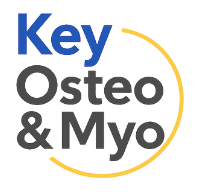Understanding TMJ Disorder and Flare-Ups
What happens during a TMJ flare-up?
A TMJ flare-up is a sudden increase in pain, tension, or dysfunction within the temporomandibular joint and its surrounding muscles. Patients often describe it as their jaw “locking,” a sharp ache when chewing, or an uncomfortable tightness radiating into the temples, neck, or ears. During a flare-up, the muscles that control jaw movement contract excessively, the joint may become inflamed, and the articular disc inside the joint can slip or catch.
- Jaw stiffness and difficulty opening the mouth fully.
- Pain radiating into the temples, cheeks, or ears.
- Increased clicking or popping noises when moving the jaw.
- A heavy or fatigued feeling after talking or chewing.
What happens during a TMJ flare-up?
- Sharp or aching jaw pain when eating, speaking, or yawning.
- Limited movement or stiffness, sometimes with the jaw locking open or closed.
- Clicking, popping, or grinding noises as the condyle rubs unevenly inside the socket.
- Tension headaches and facial pain radiating into the temples or cheekbones.
- Ear symptoms such as ringing, aching, or pressure.
- Neck and shoulder tightness, as surrounding muscles compensate.
Why symptoms can come and go
Common reasons symptoms come and go include:
- Stress and bruxism: A stressful week at work may trigger clenching and grinding, while a calmer period gives temporary relief.
- Postural strain: Hours of “tech neck” at a laptop can cause flare-ups, but a few days with better posture may ease symptoms.
- Diet and chewing habits: Chewing gum or eating tough food increases strain, while softer meals allow the joint to rest.
- Sleep position: Lying on the stomach or with the jaw compressed against the pillow can worsen pain, while neutral alignment reduces it.
- Hormonal and inflammatory factors: Changes in systemic inflammation or fluid balance can temporarily aggravate the joint.
At Key Osteopaths, we focus on breaking this cycle by treating the root causes and giving patients practical strategies to keep flare-ups under control. This combination of hands-on care and lifestyle guidance reduces the unpredictability and helps restore long-term stability.
Common myths about TMJ pain flare-ups
-
“TMJ flare-ups only happen because of stress.”
While stress and bruxism (clenching and grinding) are major triggers, flare-ups are also influenced by posture, diet, sleep position, inflammation, and musculoskeletal imbalances. Stress alone is rarely the full story. -
“Clicking or popping in the jaw is harmless if there’s no pain.”
Audible joint noises, even without pain, can signal disc displacement or abnormal joint mechanics. Left unaddressed, this often develops into painful flare-ups. -
“Flare-ups always settle on their own.”
Some episodes may ease after a few days of rest, but repeated flare-ups often become more frequent or intense without professional care. Early treatment prevents the problem becoming chronic. -
“Only dentists can treat TMJ problems.”
Dentists can provide night guards or splints to protect teeth, but they do not typically address the muscular, postural, or spinal issues that drive flare-ups. Osteopaths treat the whole musculoskeletal system, making their approach especially effective for long-term relief. -
“You should avoid moving the jaw during a flare-up.”
Complete rest can increase stiffness. Gentle movement, controlled exercises, and guided self-care are usually recommended to keep the joint mobile and prevent further irritation.
Dispelling these myths helps patients understand why their TMJ pain keeps returning. At Key Osteopaths, we emphasise clear education so patients know what really triggers flare-ups and how to stop them from dominating daily life.Anna, Principal Osteopath at Key Osteopaths
The Most Common TMJ Flare-Up Triggers
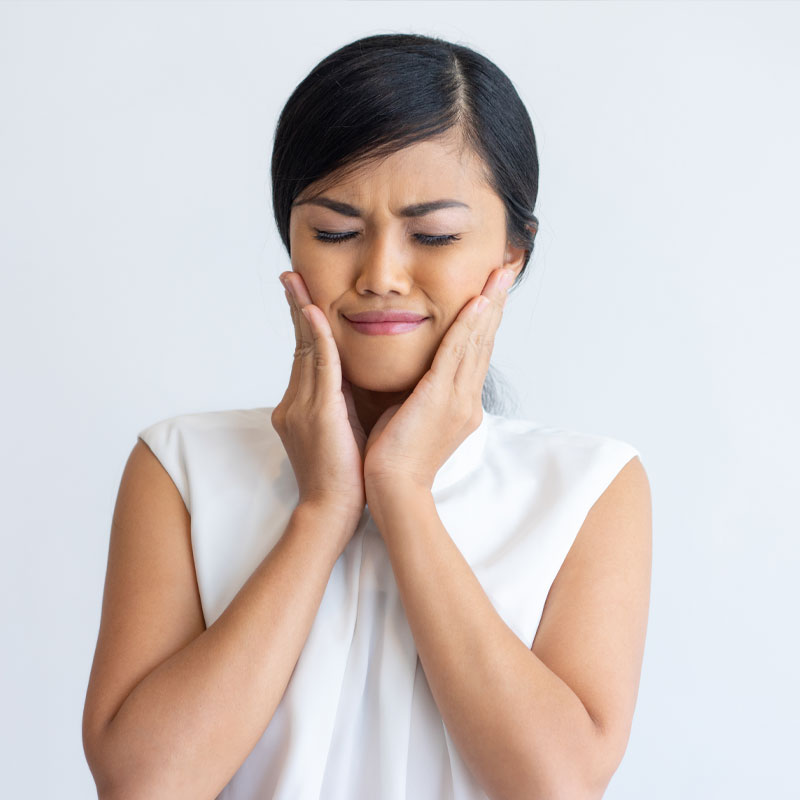
Stress, anxiety, and emotional tension
Teeth grinding (bruxism) and jaw clenching
Poor posture, tech neck, and long hours at a desk
Simple ergonomic changes make a significant difference. Adjusting screen height, using a supportive chair, and taking short stretch breaks every 45 minutes reduces the mechanical load on the jaw. Osteopathic treatment enhances this further by correcting spinal alignment, releasing tight musculature, and restoring proper movement patterns. Patients quickly notice fewer flare-ups once posture is addressed alongside direct jaw care.
Diet and chewing habits (gum, tough foods, caffeine)
Sleep positions and pillow choices
How you sleep has a significant effect on TMJ symptoms. Stomach sleeping, which forces the head to one side for hours, compresses the jaw joint and strains the neck. This position is strongly linked to morning flare-ups. Side sleeping can also be problematic if the pillow is too high or too low, as it pushes the jaw into an awkward angle.
Patients often underestimate the effect of pillow choice until they experience the difference themselves. Small adjustments in sleep setup often make the joint less irritable and significantly reduce morning headaches or jaw stiffness. Osteopaths at Key Osteopaths commonly review pillow and sleep posture with patients to make sure progress in the clinic continues through the night.
Dental issues and bite misalignment
Bite alignment plays a critical role in how the temporomandibular joint functions. When the upper and lower teeth do not meet evenly, the jaw must shift slightly to make contact. This constant micro-adjustment strains the joint and surrounding muscles, creating conditions where flare-ups are more likely.
Common dental issues linked to TMJ problems include:
- Malocclusion (uneven bite or misaligned teeth).
- Missing teeth that alter how pressure is distributed during chewing.
- Crowding or orthodontic changes that affect jaw mechanics.
- Excessive dental work that subtly shifts bite patterns.

MEET THE
team
Anna is a brilliant osteopath she has helped me with varioys limitations and helped improve my quality of life
Why TMJ Symptoms Worsen Without Treatment
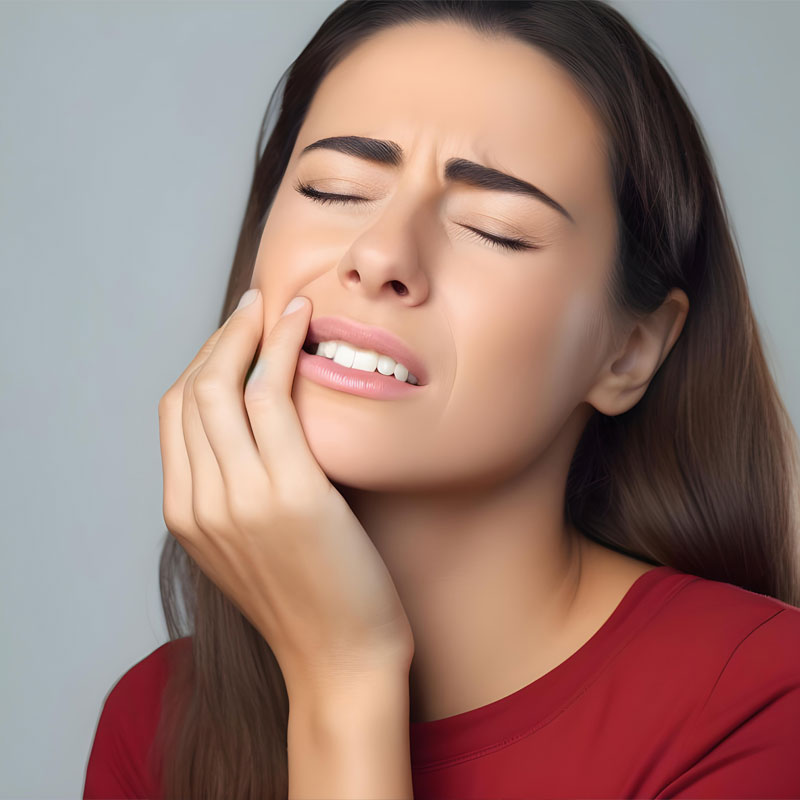
The cycle of tension, inflammation, and joint stress
1. Muscle tension builds through clenching, grinding, poor posture, or stress.
2. Joint irritation develops as the articular disc and surrounding tissues are compressed.
3. Inflammation increases pain, stiffness, and sensitivity.
4. Compensatory strain spreads to the neck, shoulders, and head, creating additional discomfort.
5. Recurrence occurs as the joint remains vulnerable, setting the stage for the next flare-up.
Patients in areas such as Woking and Chertsey often come to Key Osteopaths only after this cycle has repeated for months. By then, flare-ups are more frequent and harder to control. Breaking the cycle early through targeted osteopathic treatment and lifestyle changes prevents the condition from becoming chronic and allows the joint to recover more fully.
Long-term risks of ignoring flare-ups (chronic pain, headaches, neck tension)
- Chronic jaw pain that no longer settles between flare-ups.
- Recurring headaches and migraines triggered by constant tension in the jaw and temples.
- Neck and shoulder tightness caused by ongoing muscular compensation.
- Worn or damaged teeth from years of grinding.
- Reduced jaw mobility, sometimes resulting in locking or deviation when opening the mouth.
- Emotional stress and sleep disturbance, as ongoing pain disrupts rest and daily life.
Patients around Walton-on-Thames and Esher often tell us they put off seeking care because they assumed the jaw would recover on its own. By the time they visit Key Osteopaths, the flare-ups have become so frequent that they interfere with eating, work, and sleep. Early treatment is always easier and more effective than waiting until the disorder becomes entrenched.
How to Reduce TMJ Flare-Ups Naturally
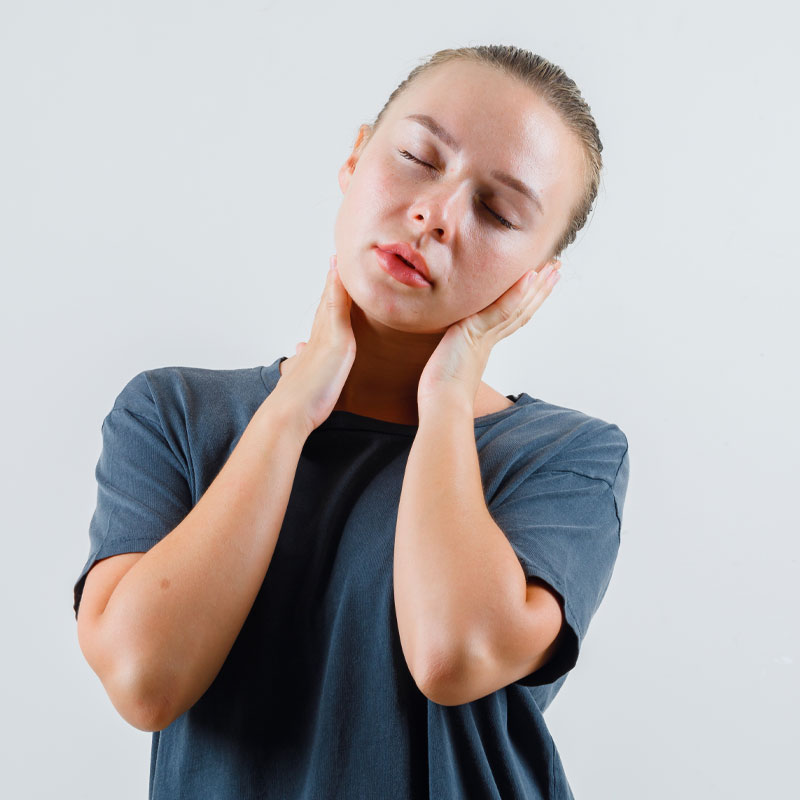
Relaxation techniques and stress management
- Breathing techniques such as diaphragmatic breathing or box breathing to calm muscle tone.
- Mindfulness and meditation, which help reduce unconscious clenching.
- Progressive muscle relaxation where jaw, neck, and shoulder muscles are tightened and released to train them to relax.
- Short breaks during the day to unclench the jaw and reset posture, especially during work.
- Evening wind-down routines to improve sleep quality and reduce night-time bruxism.
Ergonomics and posture adjustments
- Keep screens at eye level rather than looking down.
- Use a supportive chair that maintains spinal alignment.
- Take short movement breaks every 45 minutes.
- Position the jaw at rest with teeth slightly apart, lips closed, and tongue resting gently on the roof of the mouth.
Patients working in home offices across West Byfleet, Woking, and Weybridge often report more frequent flare-ups since remote work increased their screen time. Addressing workstation setup alongside osteopathic care helps restore balance and reduce recurring jaw tension.
Heat, cold, and massage during flare-ups
- Heat therapy relaxes tight jaw muscles and improves circulation, making it easier to move the joint without pain. A warm compress or hot water bottle wrapped in a towel works well.
- Cold therapy reduces inflammation during acute flare-ups. A cold pack should be applied for 10–15 minutes with a cloth barrier to protect the skin.
- Gentle massage of the masseter and temporalis muscles with circular fingertip movements can ease tension. Some patients benefit from intraoral massage techniques demonstrated by an osteopath.
Gentle jaw exercises to restore mobility
These approaches do not replace professional treatment but they complement it, shortening recovery time and easing discomfort between appointments. At Key Osteopaths our osteopaths show patients exactly how to apply these techniques safely so they become part of a reliable self-care routine.
Examples include:
- Controlled opening with the tongue against the palate to promote smooth, symmetrical movement.
- Goldfish exercises (partial and full openings) to reduce joint clicking and restore mobility.
- Isometric holds where gentle resistance is applied with the hand to strengthen stabilising muscles.
- Side-to-side glides to improve range of motion and reduce deviation.
Fantastic service! Anna has worked her magic when I’ve been in real pain. She’s professional, honest and is always smiling – I couldn’t recommend more highly !
I was seen by Anna initially because I had hurt my neck so badly that I was unable to pick up my baby from the floor. In tears on the… read more phone she managed to get me an appointment that day, and she worked her magic, I could move my neck on the way out and the next day the pain had gone. Since then I have seen her regularly (my choice) as she is so fantastic. Very professional, gentle and lovely. Thank you so much!
Professional Help for TMJ Flare-Ups
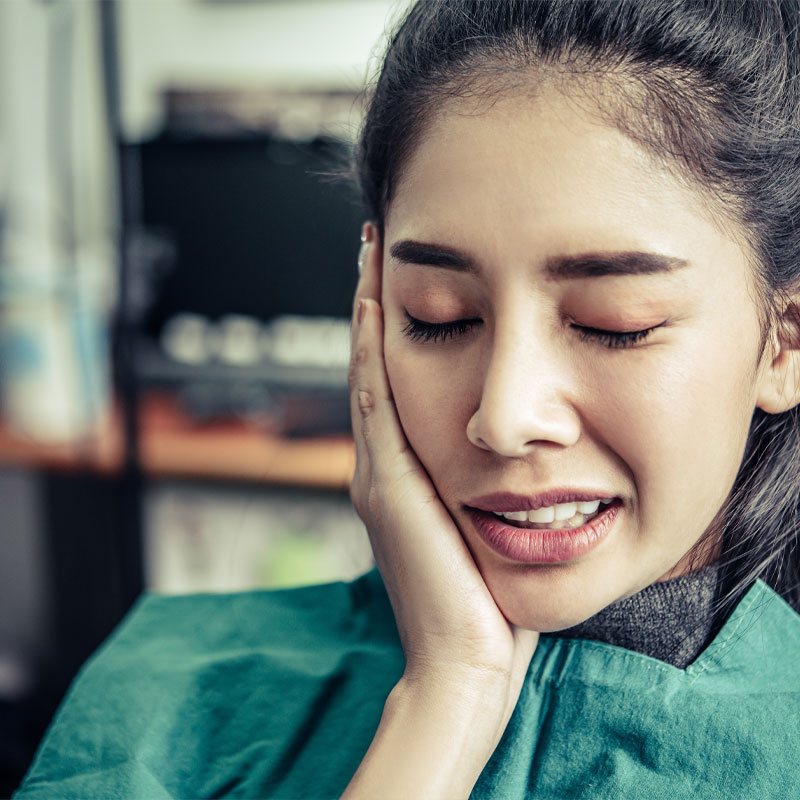
How osteopathic treatment reduces flare frequency and intensity
- Manual therapy and mobilisation to restore smooth joint glide and reduce disc irritation.
- Soft tissue and myofascial release for the masseter, temporalis, and pterygoid muscles, which often remain hyperactive during flare-ups.
- Cranial and craniofacial techniques to release tension patterns around the skull base and improve neurological balance.
- Postural correction targeting forward head posture and tech neck, which overload the jaw joint.
- Patient education on relaxation strategies, jaw exercises, and self-care routines to maintain results at home.
Manual therapy and cranial osteopathy approaches
Manual therapy focuses on restoring movement and releasing tension in the jaw and surrounding muscles. Osteopaths use gentle mobilisation techniques to ease the condyle’s glide within the socket, myofascial release to relax overworked muscles such as the masseter and temporalis, and trigger point therapy to relieve referred pain into the temples, cheeks, or ears. This improves mobility and helps break the cycle of tension and inflammation.
When to combine osteopathy with dental or medical care
- Dental care: If teeth grinding is severe, a custom night guard from a dentist can protect enamel while osteopathy relieves the muscular strain behind the grinding. Misalignment, missing teeth, or malocclusion may also require corrective dental input alongside manual therapy.
- Medical care: In cases of severe inflammation, a GP may recommend short-term medication to calm pain and swelling. Osteopathy complements this by restoring function and reducing the likelihood of recurrence once the acute flare is under control.
- Joint complications: Where there are structural changes such as disc displacement without reduction or suspected arthritis, referral to a dental specialist or maxillofacial consultant may be appropriate. Osteopathy can still provide significant relief by managing muscular and postural imbalances.
This collaborative model works particularly well for patients in Guildford, Cobham, and Chertsey, where many present with long-standing TMJ issues that have resisted single-discipline treatment. By combining osteopathy with dental or medical support where necessary, outcomes are faster, more effective, and longer lasting.
Prevention: Building Long-Term Resilience Against TMJ Flare-Ups
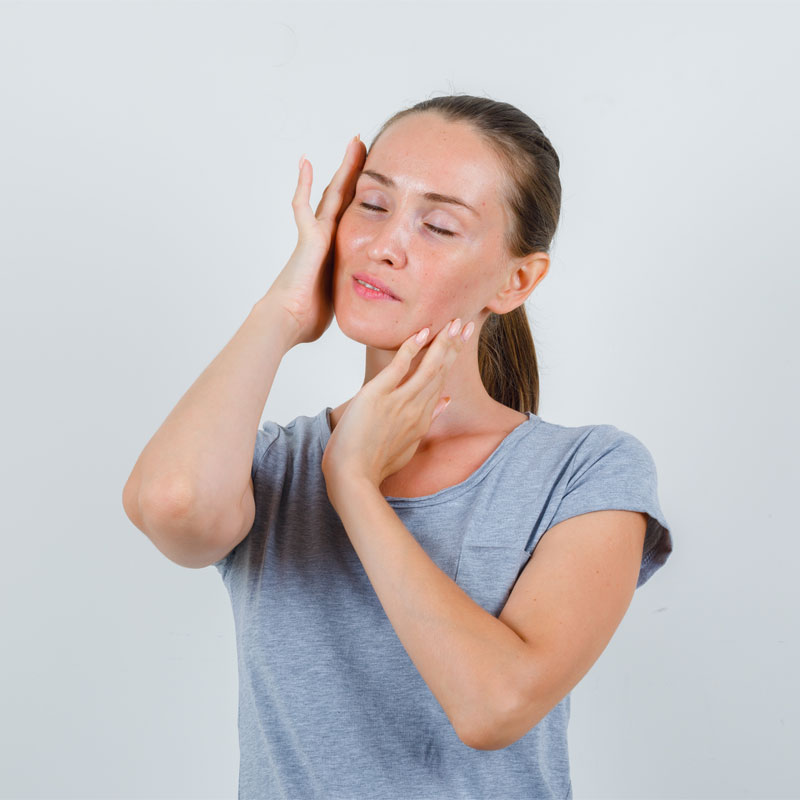
Daily habits to protect the jaw
- Jaw awareness: Keep the teeth slightly apart at rest, lips closed, and tongue resting gently against the roof of the mouth. This “freeway space” prevents unnecessary compression of the joint.
- Balanced chewing: Avoid favouring one side of the mouth and reduce repetitive chewing habits such as gum or biting pens.
- Regular posture checks: Reset your workstation setup and take short breaks to release tension in the jaw, neck, and shoulders.
- Controlled screen use: Limit prolonged phone scrolling or laptop use with the head tilted forward.
- Sleep support: Use a supportive pillow to keep the neck neutral and avoid stomach sleeping.
- Stress management: Build in daily relaxation such as deep breathing, mindfulness, or gentle stretching to reduce unconscious clenching.
Monitoring early signs of stress and tension
Common early signs include:
- A tight or heavy feeling in the jaw by the end of the day.
- Morning headaches or facial soreness linked to night-time grinding.
- Noticing jaw clenching during driving, working, or concentrating.
- Ear pressure or mild ringing that worsens when stressed.
- Increased neck or shoulder stiffness without obvious cause.
Why ongoing treatment gives the best results
- Better joint stability, as manual therapy gradually retrains movement patterns.
- Reduced muscle overactivity, as tension is released and posture is corrected over time.
- Sustained improvement, because patients continue to receive guidance on stress, diet, and ergonomics.
- Lower recurrence, since flare-ups are tackled before they spiral into chronic pain.
Stop Flare-Ups, Take Control of Your TMJ Health
Summary of key TMJ flare-up triggers
- Stress and anxiety that drive clenching and grinding.
- Long desk hours and “tech neck” posture.
- Chewing gum, tough foods, or excessive caffeine intake.
- Sleeping on the stomach or with the jaw compressed against the pillow.
- Dental misalignment or missing teeth.
Recognising these triggers is the first step. Building protective daily habits and using natural self-care strategies such as heat, massage, and relaxation techniques can help reduce flare frequency. But the most effective results come from combining self-management with professional care.
Why professional treatment at Key Osteopaths helps patients manage TMJ successfully
Our approach combines:
- Manual therapy and cranial osteopathy to restore smooth joint function.
- Myofascial and soft tissue release to reduce muscle overactivity.
- Postural correction to address forward head position and desk strain.
- Stress and lifestyle advice to reduce clenching and grinding triggers.
- Collaboration with dental and medical professionals when needed.
After years of visiting chiropractors, I have decided to try osteopath services. Anna is very skilled and knowledgeable as well as warm and friendly. Each session improved my condition… read more and I always left feeling pain-free. I would highly recommend Anna’s services.
Frequently Asked Questions About TMJ Flare-Ups
What usually triggers a TMJ flare-up?
How long does a TMJ flare-up last?
Can stress really make TMJ worse?
Can I treat a TMJ flare-up at home?
Yes, there are several effective self-care strategies. Applying heat or cold, practising gentle jaw exercises, massaging the masseter and temporalis muscles, and managing stress all help reduce symptoms. However, home care works best when combined with professional treatment to address the root causes.
